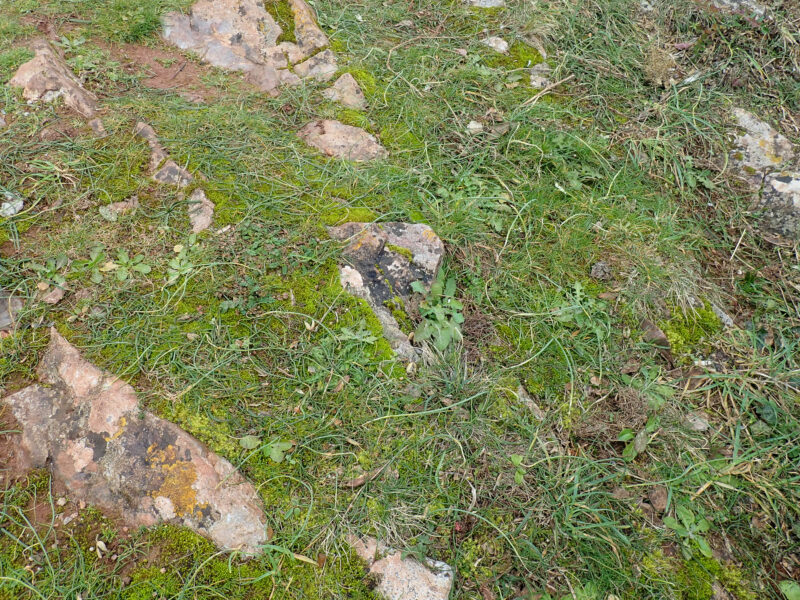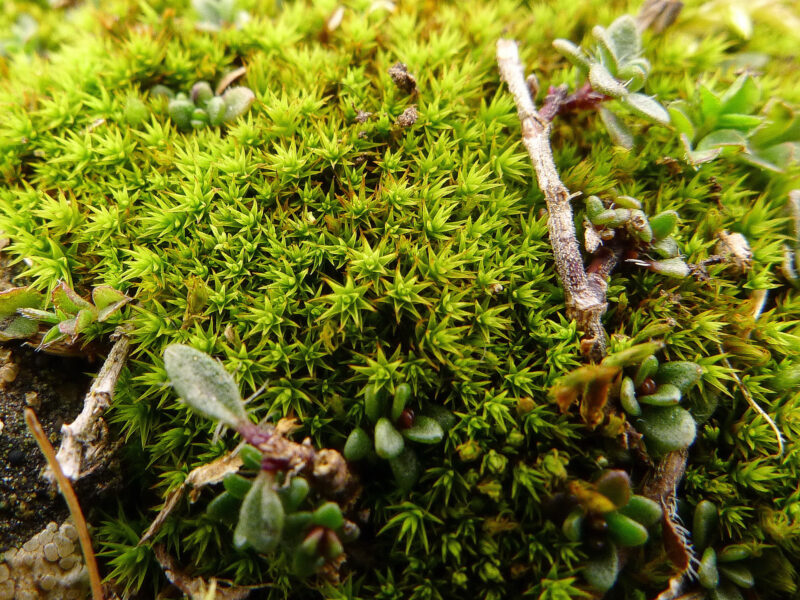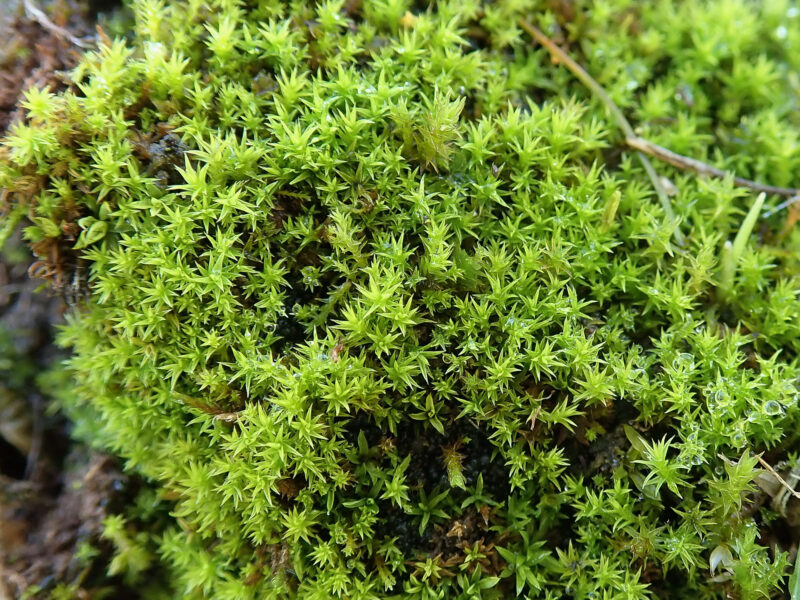Identification notes
Although this is a very rare moss, it can form large populations in some of its exclusively coastal habitats. It is intolerant of cold climates, and its needs are simple but highly specific – usually south-facing slopes by the sea, on skeletal soils over limestone which are either grazed extremely close, or heavily trampled by people. It’s no coincidence that most populations are in heavily used paths or on viewpoints – the trampling reduces competition from other plant life.
Moist plants have rigid, opaque bright green spiky-looking leaves that bear little resemblance to small Polytrichum species, despite what some accounts say. Only Pseudocrossidium hornschuchianum comes close to it in looks and shares its preference for limestone grassland. However, C. chloropus has plane leaf margins and P. hornschuchianum has strongly recurved ones.
Under the microscope, C. chloropus is in a class of its own. The mid-upper leaf lamina is bistratose and its cells have remarkable tall mamillae so it is unlike anything else.
It often grows with other coastal bryophytes, especially Tortella squarrosa, Weissia controversa var. crispata, Microbryum starckeanum and Scorpiurium circinatum.
Read the Field Guide account












